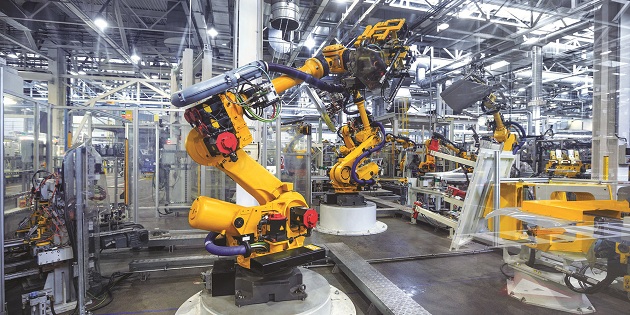In an automated factory, programmable logic controllers (PLCs) direct the flow of activity. Based on analog and digital inputs and outputs, PLCs make decisions for the machines, sensing and controlling everything from simple lighting functions to environmental systems. When input stimuli, in the form of voltage of current, comes in from machines, sensors, or process events, the PLC has the important task of accurately interpreting and converting the stimuli for the CPU. The CPU then instructs the output systems that control actuators in the factory.
Since PLCs operate in rather harsh environments, designing them requires adhering to various criteria. They have to be precise, yet also flexible and configurable to support a variety of applications. They need to work flawlessly for years in environments where there could be a lot of electrostatic discharge (ESD), electromagnetic interference (EMI), radio frequency interference (RFI), and high-amplitude transient pulses. IO-Link and smart sensor technologies are enabling factories for distributed control. However, these technologies are driving factory automation equipment—including PLCs—to smaller and smaller form factors.
Achieving a Smaller PLC Footprint

Executive Business Manager,
Core Products Group
Maxim Integrated
Maxim engineers have done a lot of work to develop analog ICs that help reduce the PLC footprint. This allows these controllers to be placed closer to the edge of the manufacturing floor in an automated factory. For example, consider a PLC analog input module (Figure 1). For these modules, small precision analog ICs can help meet the reduced footprint requirement. There are a variety of considerations to keep in mind
Input signals going into PLCs come in various flavors. Large- and small-scale analog signals can range from millivolts to tens of volts or from milliamps to amps. A PLC analog input module accepts voltage and current-mode input signals. When choosing analog input circuits, your choice will likely depend on a variety of factors:
The number and type of inputs the module will handle
- Whether these inputs must be individually or group isolated
- Needs related to sensor simulation and/or biasing
- Multiple sensor sampling simultaneously
- Your design’s targeted signal frequency range
- Requirements for anti-alias filtering
- Resolution of the AD converter
- Required sampling rate
Lowering Power in Key PLC Components
In Figure 1, in the signal chain component, input from the voltage sensors is routed to an analog-to-digital converter (ADC) for signal processing before the signal eventually gets to the microprocessor. In the signal chain, voltage references essentially regulate the voltage by producing a constant voltage, regardless of factors such as the loading on the device, temperature changes, or power supply variations. The MAX6069 precision shunt voltage reference comes in a 4-bump WLP and allows a wide 1uA to 2mA current range, which addresses requirements for small size and low power. The IC supports industrial process control sensors and industrial IoT sensors, which allows a full mixed-signal chain at the tip of the sensor without requiring routing of sensitive analog data up a long rod. Regulating a precision reference voltage with lower current frees up power for other functions, such as longer sensing runtime, more processing power and algorithms, and higher accuracy, lower noise, and wider bandwidth op amps.
Maxim also offers small, low-power analog ICs for the other blocks in the diagram. Examining the rest of the signal chain, there are solutions like the MAX11105 compact, high-speed, low-power successive approximation ADCs, which consume only 5.2mW at 3Msps and 3.7mW at 2Msps. For the op amp, the MAX44260 provides an example of an IC offering high speed, precision, low noise, and low-voltage operation. With these characteristics, this IC is suitable for amplifying signals in industrial equipment.
Modern PLCs have not undergone too much change since they were introduced in the 1960s. Today’s PLCs, however, are another story, since process control now requires higher levels of performance, smaller form factor, and more functional flexibility. By integrating multiple functions into small, low-power parts, Maxim provides analog ICs that support the demands of Industry 4.0.









